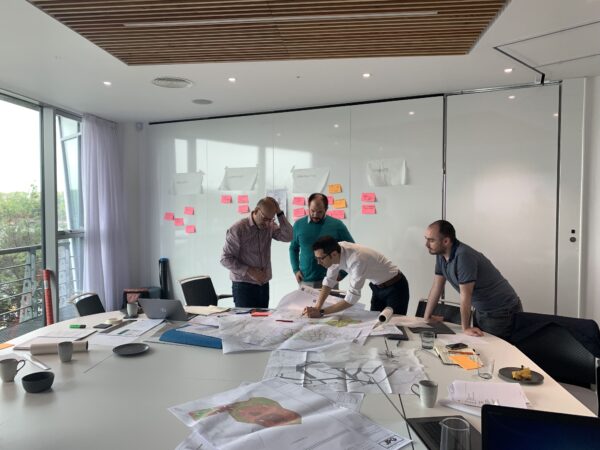Retrofit and Heritage: Engineering Heartspace
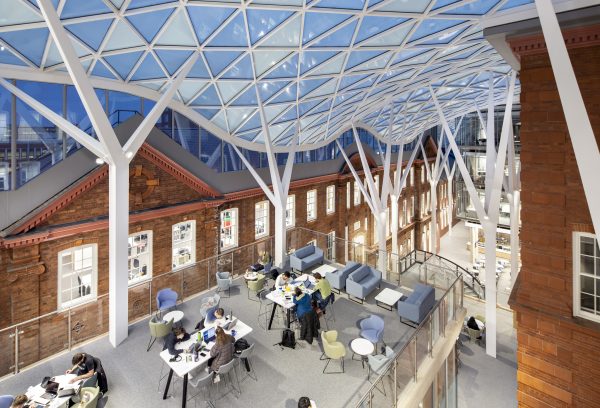
Transforming heritage buildings isn’t just a technical challenge – it’s a strategic one. It requires vision, discipline, and the ability to navigate layers of complexity. When done well, the results can be truly transformative.
The Engineering Heartspace, at the University of Sheffield, stands as a bold example of what’s possible with retrofit when heritage is approached not as a constraint, but as an opportunity.
It shows how thoughtful intervention can turn historic assets into high-performing, future-ready spaces — without compromising their character or legacy.

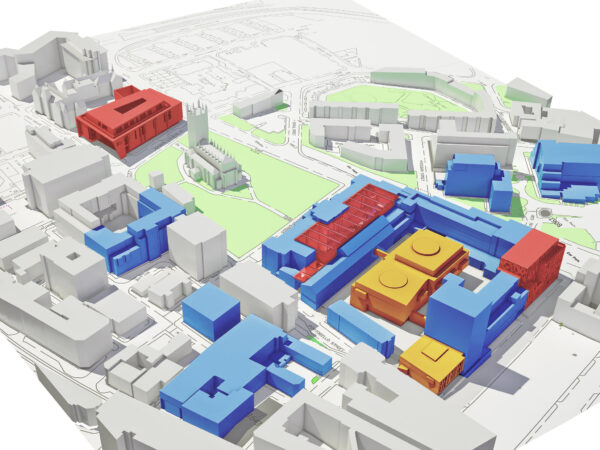
Identifying Potential
Long before the brief for this project was even established, our team underwent a thorough period of workshopping with the University of Sheffield’s Estates and Faculty of Engineering teams to develop a comprehensive Estate Development Framework — a long-term plan to modernise, rationalise, and future-proof around 120,000m² of facilities.
The challenge was significant: rapidly growing teaching and research demands, specialist space requirements, and the need to improve efficiency without losing character. Future needs were modelled against existing capacity, multiple growth scenarios we’re explored, and phasing plans were developed to maintain continuity of teaching and research throughout.
The result was a carefully sequenced strategy that balanced ambition with deliverability — enabling the Faculty to accommodate more than double its teaching and research activity with only a 60% increase in floorspace. The Heartspace emerged from this framework as a pivotal project, bringing together heritage assets and modern infrastructure to meet the University’s vision.
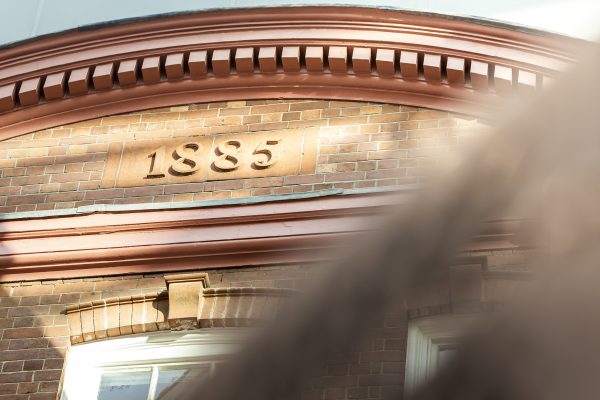
Context and Challenge: A Site Full of History and Complexity
The Engineering Heartspace site sits at the historic heart of its world-renowned engineering faculty – situated between the 1885 Central Wing and the Grade II listed Mappin Building. These buildings are both extremely rich in the history and heritage of Industrial Sheffield, with the latter dedicated to the so-called ‘father’ of Sheffield University – Sir Frederick Mappin, a Sheffield factory owner.
By the early 2010s, however, these two structures were increasingly unsuited to the needs of modern teaching, collaboration, and research. Social and study spaces were growing scarce, laboratories were difficult to access, and environmental performance was poor.
The challenge was not simply to bring these two legacy buildings up to modern teaching and environmental standards, but also to deliver an inspiring space as visionary and innovative as the faculty who would sit inside it.
At the heart of the transformation was a radical idea: rather than treating the underused courtyard between the buildings as leftover space, why not make it the centrepiece?
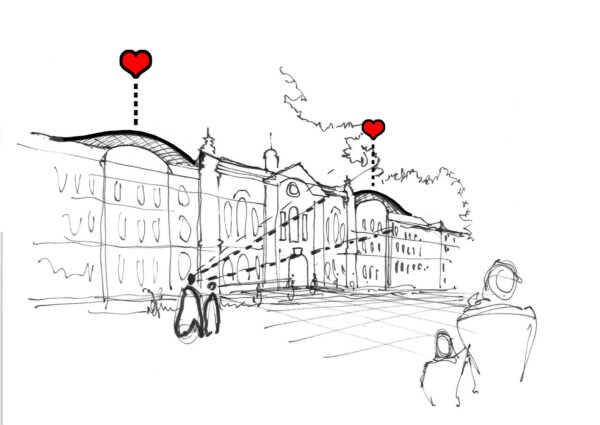
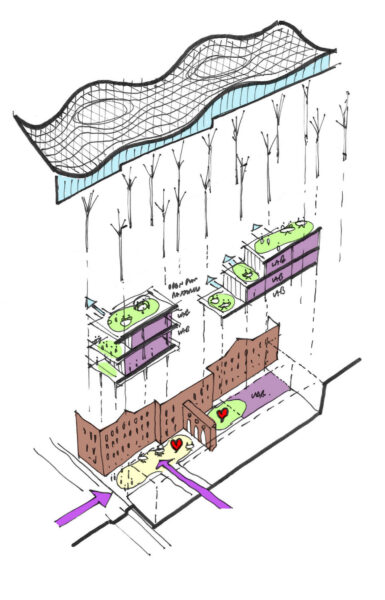
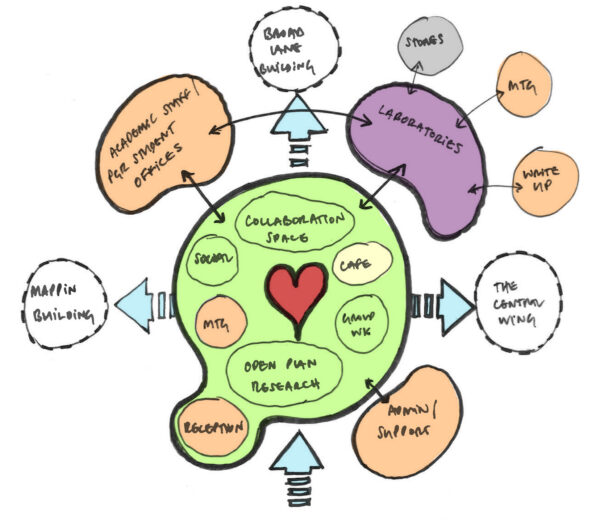
A Bold Reimagining
The team proposed the insertion of a sweeping four-storey glazed atrium – the “Heartspace” – that would unify the site into a coherent, collaborative whole. The concept was bold yet still a sensitive response to the brief and context – a visionary idea that proved to produce a sum greater than its parts.
The new Heartspace now functions as both the social core and the architectural anchor of the Faculty of Engineering. It includes:
- Flexible engineering labs designed for modern research
- Social and collaborative spaces, including a café and informal study zones
- A striking visual identity that creates an inspiring sense of place and connection
By repurposing the courtyard, the scheme unlocked significant floor area, delivered dramatic spatial and experiential improvements, and avoided the carbon and cost implications of building elsewhere.
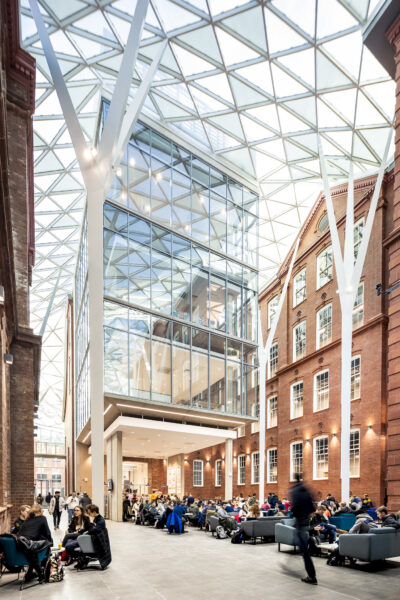
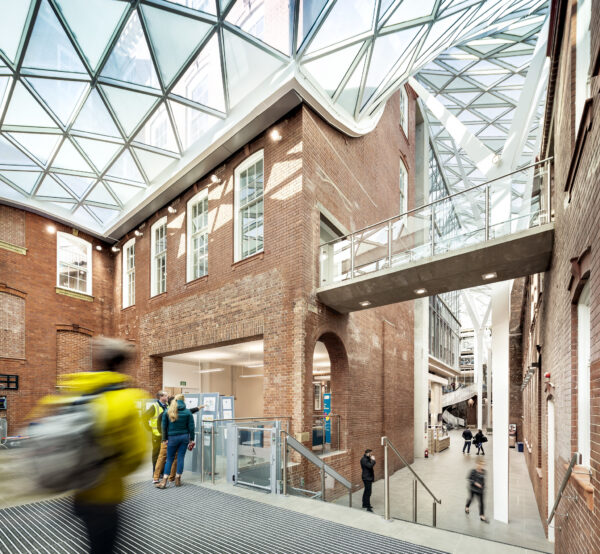
Heritage Meets Modernity: Respecting and Reworking the Past
Throughout the project, a conservation-led approach was essential. The design team engaged with heritage stakeholders from the earliest stages, ensuring that every decision was aligned with the complex network of heritage requirements, and respectful of the buildings’ original character.
- Façades were retained and refurbished, with careful cleaning and re-pointing
- Bricks from demolished structures were salvaged and reused in patch repairs
- Roofs were insulated and upgraded from within, preserving historic rooflines
These interventions preserved the integrity of the listed fabric while enabling the buildings to meet contemporary standards. In this way, heritage became not a barrier, but a driver for precision, creativity, and care.
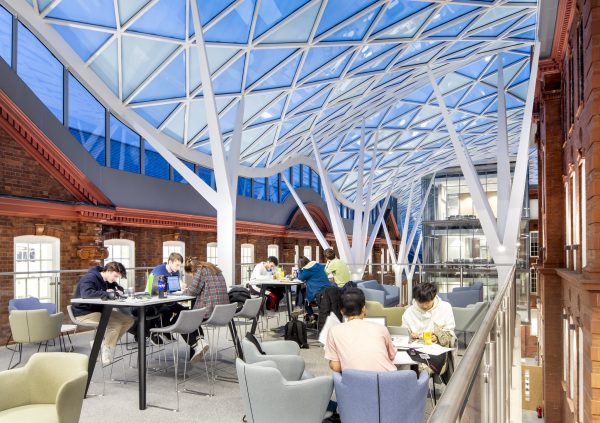
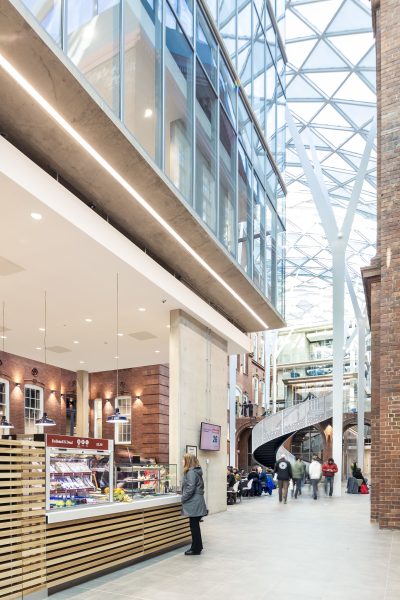
Fit for the Future
Although sustainability wasn’t the headline of the original brief, the deep retrofit approach embedded long-term performance into the project from the outset.
- Mechanical and electrical systems were fully replaced with modern, energy-efficient alternatives
- Strategic placement of glazing — a new double-glazed glass roof was designed into the scheme to maximise daylight. Fritting was included on the glass within the atrium to manage solar gain and reduce overheating.
- Double glazed windows – existing single glazed sashes were replaced with custom-designed double glazed units, to match the original, that improved thermal performance and reduced heat loss.
The integration of old and new was handled with technical finesse:
- A unified building management system ties together environmental controls across historic and contemporary spaces
- Shared ventilation and lighting systems improve user comfort and operational efficiency
- Modular labs and adaptable spaces ensure long-term flexibility— future-proofing the building for decades of evolving academic needs.
Most importantly, the way the design team were able to utilise the character of the surrounding buildings and create a striking new space means that the longevity of the asset increases substantially. Rather than developing a new building that would be knocked down in 60 years, the team partnered with spaces that have lasted over 150, and will continue to stand with protection of grade II listing.
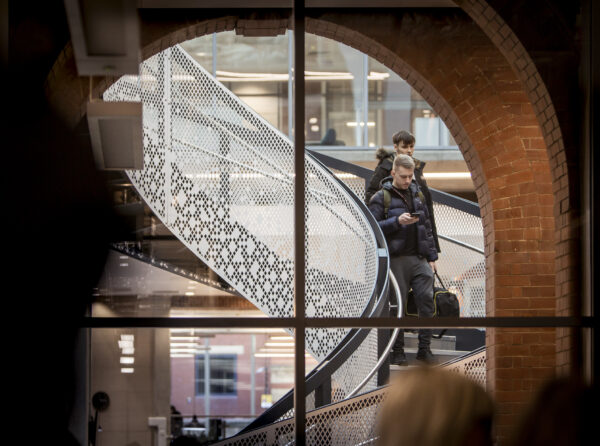
The Power of Early Engagement
The success of the Heartspace hinged on one critical factor: early, strategic engagement.
Rather than proceed with a piecemeal, phased refurbishment, the design team proposed a more ambitious, integrated approach. This meant reassessing the business case, aligning stakeholders, and creating a compelling vision that unlocked the funding required for full transformation.
- Close client collaboration with the university allowed design aspirations and operational needs to align from the outset
- BIM-led design coordination ensured accuracy and streamlined communication
This spirit of shared purpose and joined-up thinking allowed the team to push boundaries – and make the most of every square metre, every heritage detail, and every pound spent.
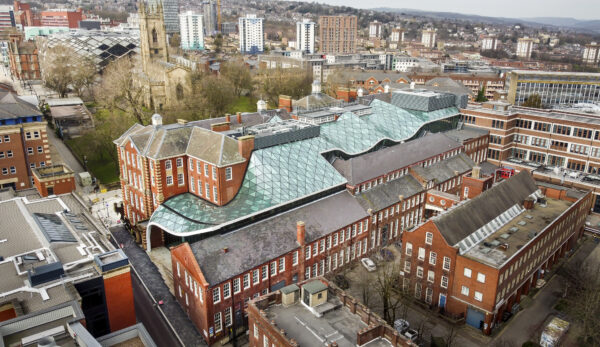
“The Sir Frederick Mappin Building and the 1885 Central Wing are treasured parts of the University. Not only were they crucial parts of the institution’s formation, they were also the birthplace of engineering at the University. We’re proud to have refurbished them so they can continue to be at the heart of Sheffield engineering and play a part in the lives and careers of our staff and students.”
Legacy and Lessons: A Benchmark for Sustainable Educational Design
The Engineering Heartspace has become more than just a building. It now serves as a vibrant central hub for students and staff – a place to learn, collaborate, socialise, and feel part of a shared academic community. The project has physically expressed the Faculty’s ambition and identity while consolidating its estate into a more coherent and efficient form.
Beyond campus boundaries, the building has made a valuable contribution to the architectural character of Sheffield and supported the local economy throughout its delivery. But its wider legacy lies in what it represents: a clear demonstration of how retrofit can deliver sustainability, architectural quality, and institutional pride.
The project shows that bold design thinking – when paired with early engagement and integrated delivery – can overcome even the most complex constraints. It highlights the opportunity to work with, not around, heritage. And it proves that adaptive reuse can create something entirely new, without losing what makes a place special.
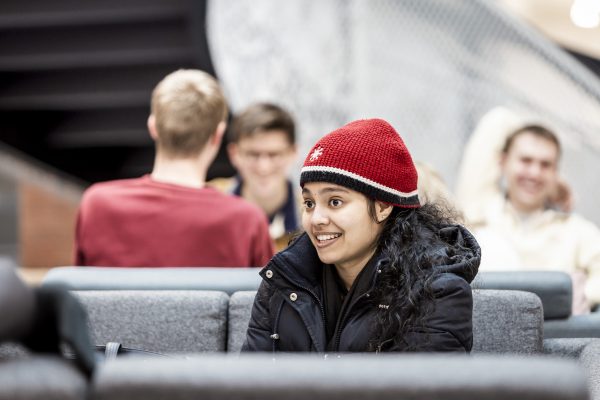
The Engineering Heartspace at the University of Sheffield proves that heritage buildings don’t have to be a stagnant asset.
Retrofit of these buildings can be completely transformative – when approached with sensitivity, creativity, and strategic thinking.
As universities and public estates face the twin pressures of decarbonisation and modernisation, all amongst difficult financial circumstances – retrofit and adaptive reuse become increasingly crucial strategies.
Get in touch with our team if you’d like to discuss how we can reimagine your legacy building.
